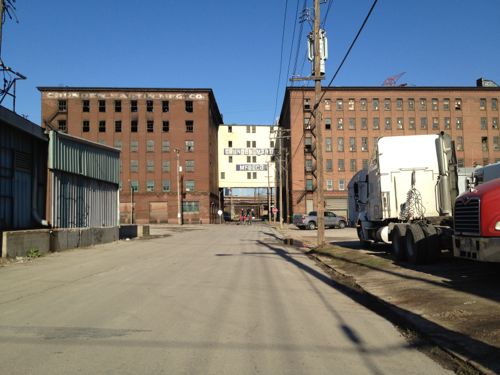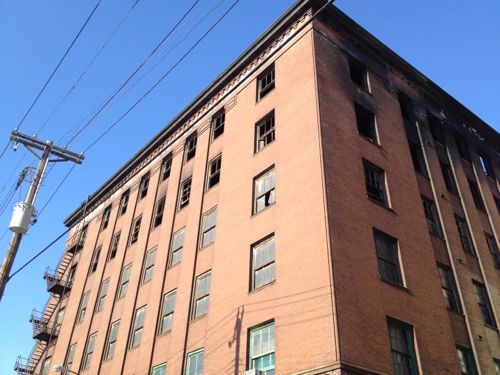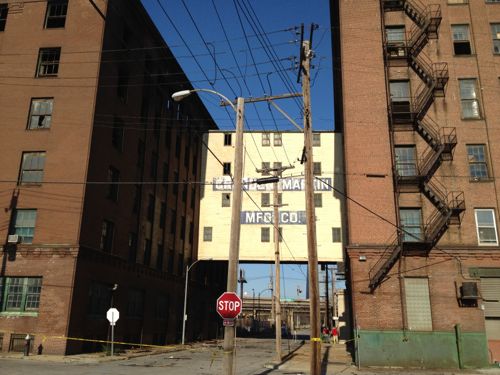Two hundred years ago today the first of a series of three earthquakes hit near the Missouri town of New Madrid:
This sequence of three very large earthquakes is usually referred to as the New Madrid earthquakes, after the Missouri town that was the largest settlement on the Mississippi River between St. Louis, Missouri and Natchez, Mississippi. On the basis of the large area of damage (600,000 square kilometers), the widespread area of perceptibility (5,000,000 square kilometers), and the complex physiographic changes that occurred, the New Madrid earthquakes of 1811-1812 rank as some of the largest in the United States since its settlement by Europeans. They were by far the largest east of the Rocky Mountains in the U.S. and Canada. The area of strong shaking associated with these shocks is two to three times as large as that of the 1964 Alaska earthquake and 10 times as large as that of the 1906 San Francisco earthquake. Because there were no seismographs in North America at that time, and very few people in the New Madrid region, the estimated magnitudes of this series of earthquakes vary considerably and depend on modern researchers’ interpretations of journals, newspaper reports, and other accounts of the ground shaking and damage. The magnitudes of the three principal earthquakes of 1811-1812 described below are the preferred values taken from research involved with producing the 2008 USGS National Seismic Hazard Map .
The first principal earthquake, M7.7, occurred at about 2:15 am (local time) in northeast Arkansas on December 16, 1811. The second principal shock, M7.5, occurred in Missouri on January 23, 1812, and the third, M7.7, on February 7, 1812, along the Reelfoot fault in Missouri and Tennessee. The earthquake ground shaking was not limited to these principal main shocks, as there is evidence for a fairly robust aftershock sequence. The first and largest aftershock occurred on December 16, 1811 at about 7:15 am. At least three other large aftershocks are inferred from historical accounts on December 16 and 17. These three events are believed to range between M6.0 and 6.5 in size and to be located in Arkansas and Missouri. This would make a total of seven earthquakes of magnitude M6.0-7.7 occurring in the period December 16, 1811 through February 7, 1812. In total, Otto Nuttli reported more than 200 moderate to large aftershocks in the New Madrid region between December 16, 1811, and March 15, 1812: ten of these were greater than about 6.0; about one hundred were between M5.0 and 5.9; and eighty-nine were in the magnitude 4 range. Nuttli also noted that about eighteen hundred earthquakes of about M3.0 to 4.0 during the same period.Â
The first earthquake of December 16, 1811 caused only slight damage to man-made structures, mainly because of the sparse population in the epicentral area. The extent of the area that experienced damaging earth motion, which produced Modified Mercalli Intensity greater than or equal to VII, is estimated to be 600,000 square kilometers. However, shaking strong enough to alarm the general population (intensity greater than or equal to V) occurred over an area of 2.5 million square kilometers.
The earthquakes caused the ground to rise and fall – bending the trees until their branches intertwined and opening deep cracks in the ground. Deep seated landslides occurred along the steeper bluffs and hillslides; large areas of land were uplifted permanently; and still larger areas sank and were covered with water that erupted through fissures or craterlets. Huge waves on the Mississippi River overwhelmed many boats and washed others high onto the shore. High banks caved and collapsed into the river; sand bars and points of islands gave way; whole islands disappeared. Surface fault rupturing from these earthquakes has not been detected and was not reported, however. The region most seriously affected was characterized by raised or sunken lands, fissures, sinks, sand blows, and large landslides that covered an area of 78,000 – 129,000 square kilometers, extending from Cairo, Illinois, to Memphis, Tennessee, and from Crowley’s Ridge in northeastern Arkansas to Chickasaw Bluffs, Tennessee. Only one life was lost in falling buildings at New Madrid, but chimneys were toppled and log cabins were thrown down as far distant as Cincinnati, Ohio, St. Louis, Missouri, and in many places in Kentucky, Missouri, and Tennessee.
The Lake County uplift, about 50 kilometers long and 23 kilometers wide, stands above the surrounding Mississippi River Valley by as much as 10 meters in parts of southwest Kentucky, southeast Missouri, and northwest Tennessee. The uplift apparently resulted from vertical movement along several, ancient, subsurface faults. Most of the uplift occurred during prehistoric earthquakes. A strong correlation exists between modern seismicity and the uplift, indicating that stresses that produced the uplift may still exist today. (USGS)
Many have been saying for years a big one is coming again.
MoDOT began strengthening the double-deck portion of I-64/Hwy 40 in August 2006 and the work continues. Will we have the big one? I don’t know, my family & friends in Oklahoma didn’t think they’d feel an earthquake there but they did last month. I probably should put together an earthquake preparedness kit.



 Friday was the two-hundred year anniversary of the New Madrid earthquake and many think another is due. Missouri experienced devastating tornados and flooding in 2011. Writing the post for last friday (
Friday was the two-hundred year anniversary of the New Madrid earthquake and many think another is due. Missouri experienced devastating tornados and flooding in 2011. Writing the post for last friday (



